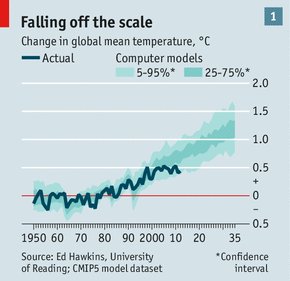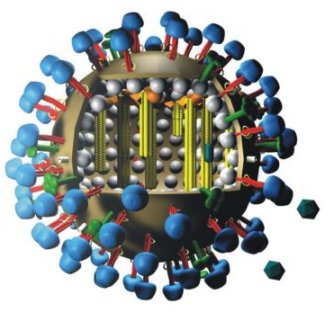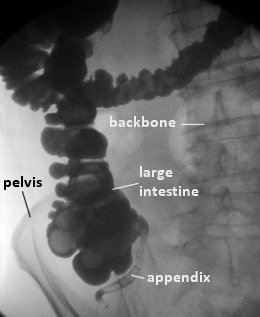
If you look at the graph above (which is from the article), you will see the GCM predictions most recently cited by Global Warming advocates. The dark cyan areas represent what the GCMs predict with a certainty of 75%, and the lighter areas represent what the GCMs predict with a certainty of 95%. As you can see, the measured surface temperatures (given by the dark line) are not behaving as predicted for the past several years. In fact, they have already strayed out of the 75% certain predictions and are poised to stray out of the 95% certain predictions. This, of course, is discussed in the article. What is not discussed is that the graph is rather misleading.
If you look at the graph from 1950 to the present day, you will see remarkable agreement between the GCM “predictions” and the measured data. However, prior to 2001, none of those “predictions” are actual predictions. They are a retrospective fit to the already-known data. You see, the GCMs are so oversimplified that they contain all sorts of “fudge factors.” Those fudge factors are varied to produce as much agreement as possible between the known data and the GCMs. Since the GCM predictions shown in that graph were produced for the IPCC report issued in 2007, they represent work done after the IPCC report issued in 2001. As a result, the data that appear on the graph prior to 2002 were all known when the work was started on the 2007 report. This means that all agreement between the “predictions” and the data prior to 2002 say nothing about the ability of the GCMs. It only tells you how well the fudge factors could be varied to agree with the known data.
Continue reading “The Trend Is Not Good for Global Warming Advocates”






